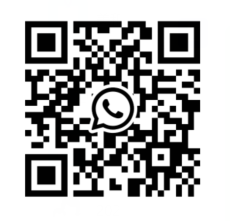
Selecting the right RFID wristband is crucial, as it impacts security, user experience, and operational efficiency. It's not just a wristband; it's the physical key to your event, venue, or cashless system.
You can refer directly to the following Q&A to help you decide:
Event Duration: Single-day or Multi-day?
- Single-day: Paper/Tyvek material
- Multi-day: Silicone/TPU material
Primary Function: Simple Access or Cashless Payment?
- Access: Low Frequency/High Frequency
- Payment: High Frequency only
Required Read Range: Arm's Length or Long Distance?
- Close Range: High Frequency
- Long Distance: Ultra-High Frequency (UHF)
Budget: What is the unit cost?
- Low: Paper;
- Medium: PVC;
- High: Silicone with secure High-Frequency chips
The following content provides a detailed analysis of key considerations, combining technical data and practical case studies, to help you make a more informed decision.
First, Define the Core Technology: LF, HF, or UHF?
The type of RFID chip is the foundation of the wristband's functionality. These three main types have different application scenarios.
Low Frequency (LF) - 125 kHz
Low-frequency tags are a mature and reliable option. They are highly resistant to interference and are less affected by metals or liquids (like the human body). This makes them ideal for basic access control in wet environments such as swimming pools or gyms. However, they have a very short read range (a few centimeters) and lack advanced security features, making them unsuitable for cashless payments or high-security applications. They are typically used for simple, one-time events.
High Frequency (HF) - 13.56 MHz (NFC)
This is currently the most widely used and versatile technology. HF wristbands comply with the ISO 14443 A/B standard, which encompasses NFC functionality. HF wristbands offer a good balance of read range (up to 10 cm), data security, and speed. Their data encryption capabilities make them the global standard for cashless payments, ticketing, and secure access. As articulated in the GS1 standard, HF is the foundation for item-level tracking in retail and logistics, highlighting its reliability.
Ultra-High Frequency (UHF) - 860-960 MHz
UHF wristbands are used for long-range identification. They can be read from several meters away, making them ideal for tracking participants at music festivals or managing warehouse inventory. However, UHF wristbands are more susceptible to interference from people and liquids. According to a Zebra Technologies study, UHF RFID technology can improve inventory accuracy by over 95%, but this performance is often overkill for typical guest-centric events.
Material & Durability: Matching the Wristband to the Environment
The wristband's physical construction determines its comfort, lifespan, and weather resistance.
Silicone and TPU (Thermoplastic Polyurethane)
These materials are ideal for multi-day events. They are soft, flexible, waterproof, and very durable. High-quality silicone wristbands can withstand sun, rain, and repeated wear without damage. They are perfect for events like Coachella, where attendees wear the same wristband all weekend for entry, payments, and transit tickets.
PVC and Vinyl
These materials offer a good balance between cost and durability, suitable for short-term events. They are not as soft as silicone but can be printed with high-quality graphics. They are waterproof but have lower tear resistance under extreme stress. Ideal for conferences, 5K runs, or single-day corporate events.
Paper and Fabric (Tyvek)
This is the most cost-effective option for one-time events. Tyvek is water-resistant and tear-resistant but not suitable for wear beyond a day or two. It's a common choice for charity walks, single-entry tickets, or situations with a tight budget. The downside is a lower perceived value and limited reusability.
Security & Data: Protecting Your Assets and Guests
The value stored on the wristband dictates the required security level.
For basic access control, a simple, unencrypted UID number is sufficient. However, for cashless payments or storing personal data, encryption is essential. It's necessary to use High-Frequency (NFC) chips with a secure element. They employ mutual authentication, meaning the chip and reader must verify each other before any data transfer occurs. A case study from Belgium's Tomorrowland festival highlights how they use secure HF wristbands to handle millions of euros in cashless transactions annually with minimal fraud.
Contact us! By systematically evaluating your technical, material, and security needs with us, you can choose an RFID wristband that is not just a ticket, but one that seamlessly and securely enhances the user experience.
الدردشة الآن
مسح ضوئي إلى WeChat :

مسح ضوئي إلى WhatsApp :
